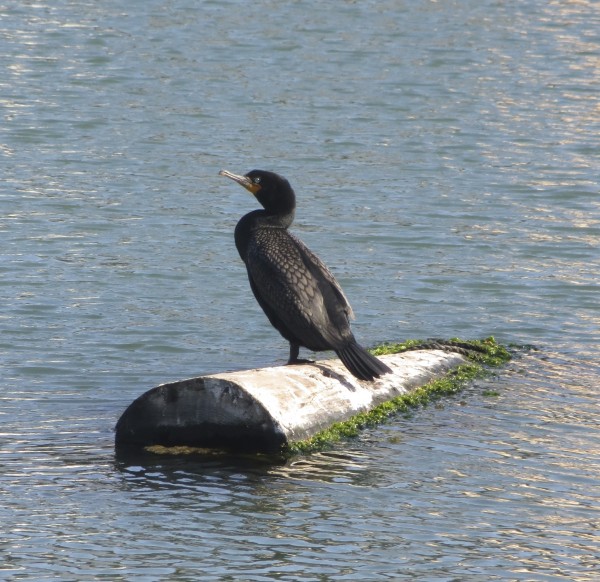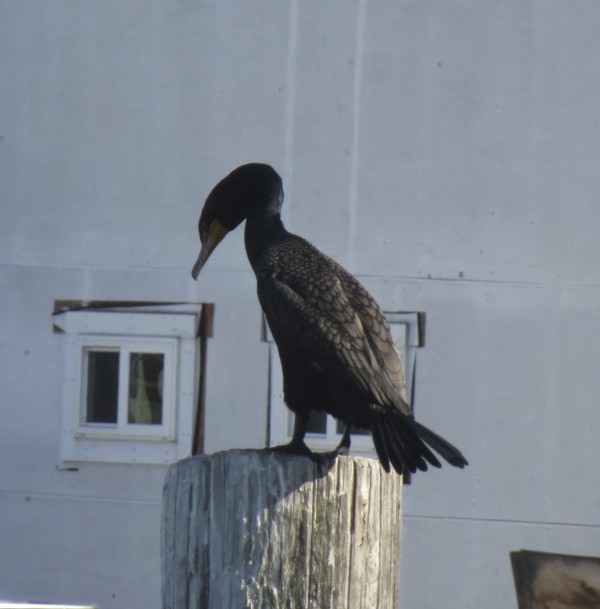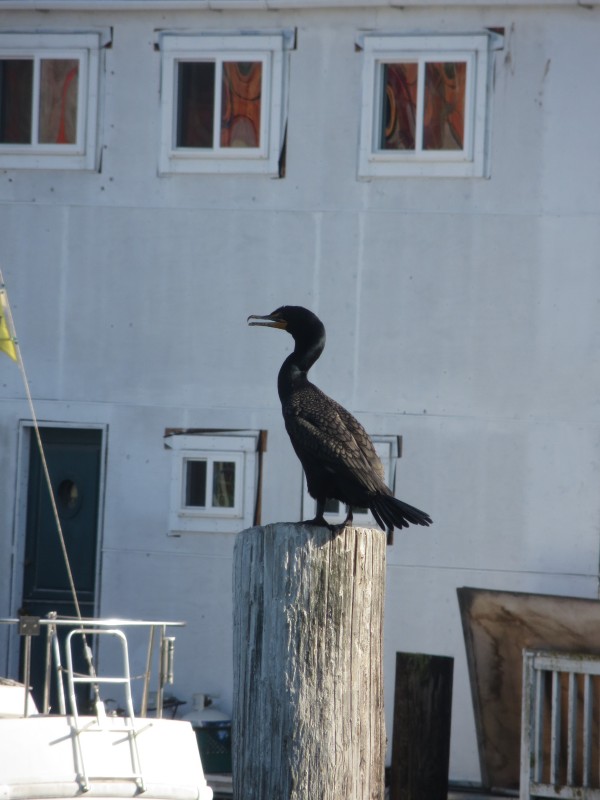I am going to switch things up a bit here: when I use my caturday supplements for other things besides cats, I get complaints from my cat-loving readers. But I have a bunch of pictures of other things, and some of them are even kind of neat. So I am going to try to mostly do cats on Saturdays, and ‘Sunday Swaps’ on Sundays. They’ll mostly be animals, with perhaps the occasional vista or city scene.
Today, we have a cormorant. It might be a Brandt’s cormorant, but I am going to hazard a guess, based on a book that calls their necks ‘snaky’, that this is a pelagic cormorant. I took a picture of him against the water, and then he helpfully flew away and silhouetted himself nicely against a houseboat. That’s a lot more cooperation than I typically get from birds.




I think that’s a double crested cormorant. It too has a snaky neck but the corner of its mouth is orange, and if it were a pelagic cormorant it’d be redder. And Brandt’s is red and blue.
See when you don’t post cats, your birding friends come out and complain! 🙂
It could well be. I am not sure that’s actually a fair representation of the color of the corner of its bill, though. I had to pull the shadows up pretty heavily in that picture, and it skewed everything quite a bit. I’m looking at my other pictures, and none of them are any better. (I initially discarded the idea that it was double-crested because I thought I read that they had long tails, but it turns out that was some other bird.)
As for Brandt’s, according to Wikipedia they only have a blue throat patch during mating season, and even then only full adults. This was taken earlier this year, in early May I think, though I admit I don’t know whether that is mating season or not.
See? I may not be a big birder (so to speak) but I did do my homework!
Now, the real question is, why the HELL doesn’t the double-crested cormorant have EVEN ONE DAMN CREST? 🙂